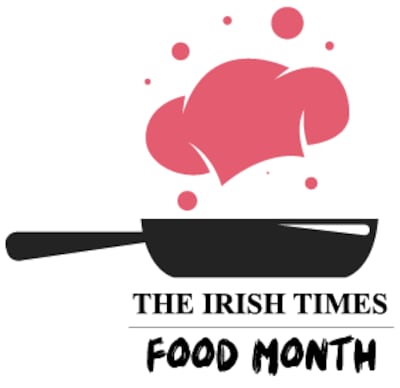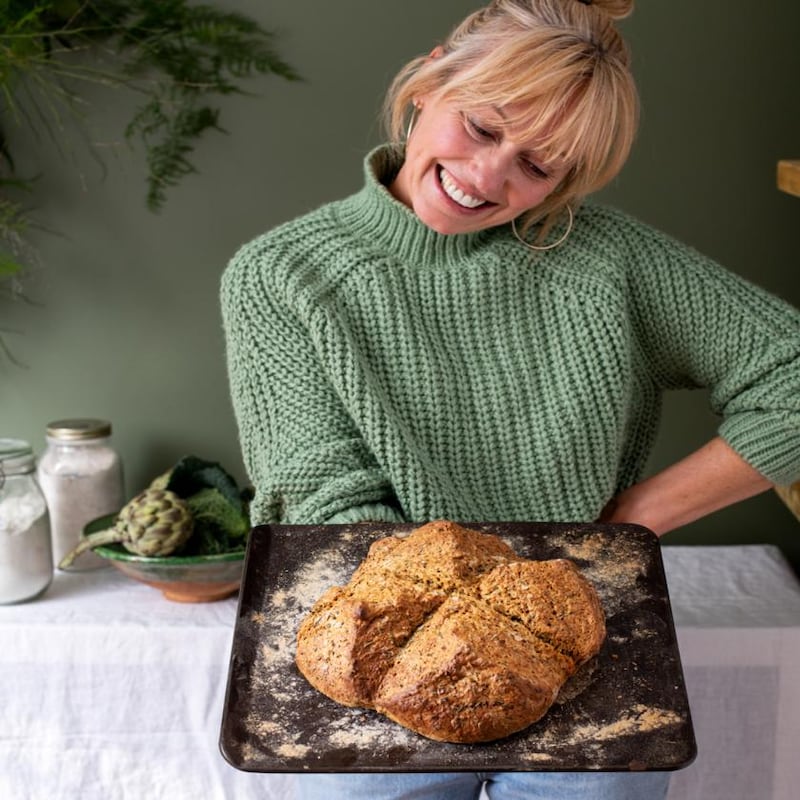This is such a special bread to me. The smell of it baking in the oven fills my home every week with a feeling of warmth and love. It’s a very simple stir, shape and bake bread: there is no kneading or resting involved. It’s a take on the traditional Irish soda bread. It’s wholesome and crumbly but doesn’t leave you feeling bloated like yeast breads can. It takes 10-15 minutes to prepare and then it’s straight in the oven. It will last for about a week, and it also freezes really well.

Making a cross in the bread is a lovely reference to the Irish tradition of blessing the bread, being thankful – but it is also very practical, as it makes it so easy to pull the bread apart and break it into quarters.
You can add seeds such as sesame, pumpkin, fennel or sunflower on top if you wish – just sprinkle them over the bread once you have shaped it and gently push them into the dough so that they don’t fall off. I use fresh rosemary, but you could also use thyme. If you have never baked bread before, this is the one to start with: it’s completely stress-free! Serve it for supper with a big bowl of soup.
This recipe is from In Minutes by Clodagh McKenna, published by Kyle Books, priced £20. Photography by Dora Kazmierak

Rosemary Clodagh Bread
Makes 1 loaf
Ingredients
200g plain flour, plus extra for dusting
2 tsp bicarbonate of soda
350g wholemeal flour
1 tbsp finely chopped rosemary
250g natural yoghurt
350ml full-fat milk
For the topping:
2 tbsp full-fat milk
2 tbsp natural yoghurt mixed together, for brushing
1 tbsp finely chopped fresh rosemary or thyme
1 tsp sea salt
Method
1 Preheat the oven to 200°C/400°F/gas mark 6.
2 Sift the plain flour and bicarbonate of soda into a large mixing bowl, then stir in the wholemeal flour and rosemary. Using clean hands, mix all the ingredients together. Make a well in the centre of the bowl.
3 Whisk together the yoghurt and milk and slowly pour into the well of the dry ingredients. (You can also use 600ml buttermilk or 600ml full-fat milk rather than the yoghurt and milk mix.) Using a fork, mix the dry ingredients into the wet ones. Make sure that there are no dry patches, and that the dough is completely wet. Pat your hands with flour and shape the dough into a round. Place on a floured baking tray.
4 Flour a large knife and cut a cross into the top of the dough, about two-thirds of the way through. Brush the dough with the milk and yoghurt mixture using a pastry brush, which will give a lovely golden colour to the bread once baked. Sprinkle the chopped fresh herbs and sea salt on top. (You can also top with seeds such as sesame, pumpkin, fennel or sunflower instead of the herbs and salt. Gently push them into the dough so that they don't fall off.)
5 Bake for 15 minutes, then reduce the oven temperature to 180°C/350°F/gas mark 4 and bake for a further 20 minutes. To test whether the loaf is cooked, tap the bottom with your knuckles; it should sound hollow. Leave to cool on a wire rack.












